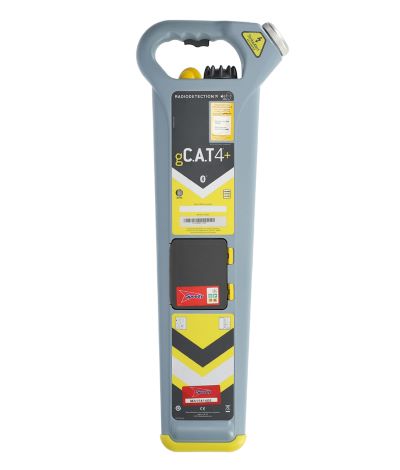
How to Use a Cable Avoidance Tool
A pipe and cable detector is a must if you are planning on drilling or chasing into your interior walls or drilling into the ground.
It will be able to detect pipes for gas or water, electrical wiring, or anything else you need to avoid. You may also need to hire a detector which can detect studs and joists if you have partition walls.
This way, you can ensure no damage is caused while knowing where exactly you can drill and install your fixtures. This increases safety and ensures you don’t make any mistakes which are expensive to rectify.
Which cable detector do I need?
When hiring pipe and cable locators, you need the correct model to detect what is necessary.
Some can be used to detect ferrous and non-ferrous metal, wood, plastic, and electric conduit in dry concrete, which includes pipes and wires. Others will also be able to detect studs.
If drilling the ground, a cable detector with strike depth which can detect buried pipes and utilities is a must.
How to Use a Cable Detector
Every cable detector will have a slightly different methodology, so it is really important to read and understand the instructions for your specific model.
If hiring your detector, speak to your local Speedy depot, who can help you choose the model you need for your specific job.
To take a reading, follow the below:
1. Choose the correct mode
Every cable detector will likely have different modes, such as Quickscan, Detailed Scan and Recording.
If you’re carrying out DIY and just need to know where not to drill, use the Quickscan mode and mark any areas to avoid with a pencil. This will be enough for fitting a shelf, hanging picture frames, or cutting out chases for wiring.
For major structuring work, or if you need a detailed survey to find out what exactly is present, a more detailed scan and recording will usually be required.
You should set the sensitivity to maximum if this can be altered.
2. Place the detector
Work out roughly where you want to drill or chase into. Place your detector a few inches to the side and turn the detector on.
You will then have to move the detector slowly over the target area to detect anything.
3. Mark the detection areas
Arm yourself with a pencil to mark anywhere to avoid.
If the detector does detect something, it will emit a noise. There may also be a light, and something will show on the screen.
When something is detected, turn the sensitivity down, and move the detector slowly over the area. When a peak response is heard or seen, mark the area with a pencil.
This will give you accurate results as to where the cable or pipe is, and how large the pipe is. If you’re concerned, and your plans allow, avoid the entire detection area.
READY FOR MORE DIY TIPS?
We have a guide on underground cables in construction work, as well as how to fill in holes in your wall if you need to repair existing holes and building work.
When it is time for your next DIY project, open a Speedy account online or visit us in-store for all your tool hire needs.
Speedy has more than 200 local service centres across the nation, hire counters in selected B&Qs and nationwide 4-hour delivery. It has never been easier to hire the tools and equipment you need.
For more tips subscribe to our YouTube Channel
Find ideas on Instagram
- 2024
- 2023
- December 2023 (13)
- November 2023 (9)
- October 2023 (7)
- September 2023 (10)
- August 2023 (20)
- July 2023 (21)
- June 2023 (17)
- May 2023 (17)
- April 2023 (16)
- March 2023 (14)
- February 2023 (15)
- January 2023 (7)
- 2022
- December 2022 (6)
- November 2022 (12)
- October 2022 (24)
- September 2022 (14)
- August 2022 (12)
- July 2022 (15)
- June 2022 (18)
- May 2022 (14)
- April 2022 (9)
- March 2022 (5)
- February 2022 (5)
- January 2022 (2)
- 2021
- December 2021 (7)
- November 2021 (10)
- October 2021 (1)
- September 2021 (1)
- August 2021 (3)
- July 2021 (3)
- June 2021 (4)
- May 2021 (1)
- April 2021 (1)
- March 2021 (2)
- February 2021 (1)
- January 2021 (1)
- 2020
- 2019
- 2017
- 2016
- 2014
- 2013
- 2012
- 2011


